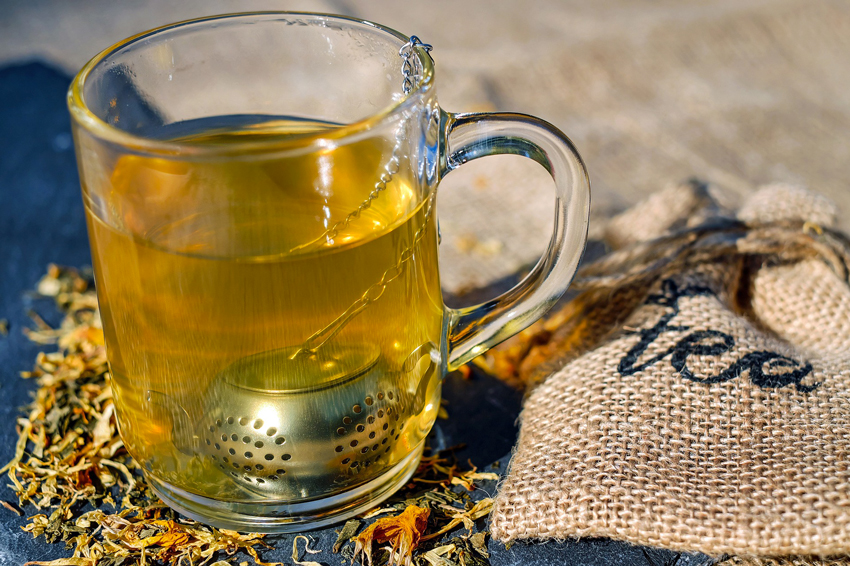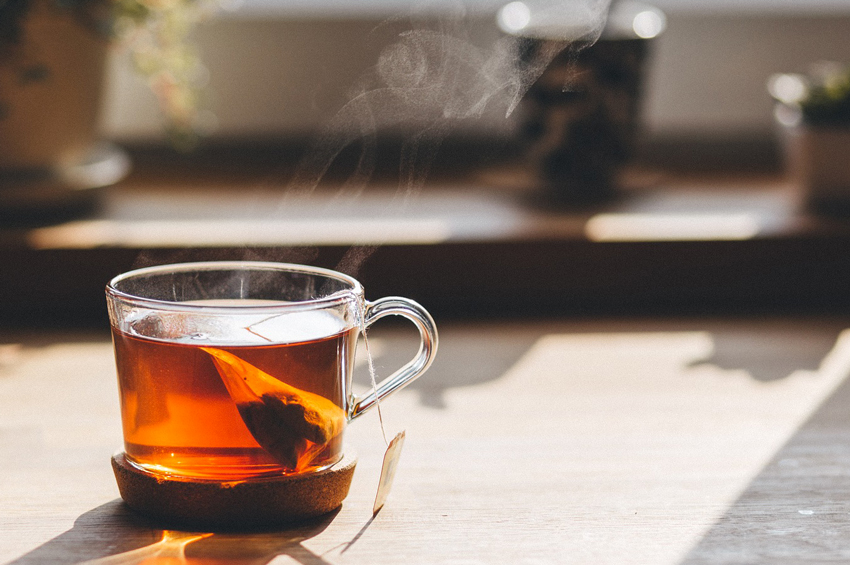So you’re at the supermarket, staring at shelves and shelves of tea. With so many different types available, you might be asking yourself, “Which tea should I choose?” This is one of the best beverages for great health, not to mention that it can give you a boost of energy or relax you after a long day. But the question still remains!
Although there are over 3,000 different varieties, the most popular come from two plant species: Camellia sinensis and Camellia assamica.
The region where the tea is grown and how it’s processed after harvest are what give each type its characteristics. For tea purists, there are four main types that are distinguished by their processing:
White tea is unfermented and the least processed of the four types. The plant’s leaves are harvested when the flower buds are still closed and covered in fine white hair. The young flower buds don’t suffer through any oxidization. They’re simply withered and immediately steamed, while the leaves are sun dried.
Because it’s hardly processed, white tea contains extremely high levels of antioxidants, making it a more powerful defense against oxidative stress and cancer than other types. With its anti-inflammatory properties, white tea slows down the aging process of the skin by fighting collagen and elastin degradation, which causes wrinkles.
It’s mostly produced in China and Sri Lanka, but in limited quantities. That’s why it’s more expensive than the other three types. It’s the mildest type with its subtle, refreshing and light “floral” taste. The color of its infusion is a very pale straw color.
Green tea is slightly more processed. Like white tea, there isn’t much to its processing. Its leaves that have withered are immediately steamed or pan-fired to keep them from oxidizing. Next, they’re rolled up and left to dry.
This tea is typically the one with the most body benefits. Among them, there’s the well-known EGCG, an extremely powerful antioxidant.
Green tea is also high in catechins, a type of natural antioxidant that protects your cells against oxidative damage and helps spare your body from aging, stress and pollution. Antioxidants prevent cancer cell development, reduce your risk of neurological disorders such as Alzheimer’s, Parkinson’s and stroke and can improve your blood lipid profile.

What’s more, green tea can also have a small impact on weight loss by speeding up your metabolism, which can get you faster results when paired with exercise and a healthy, balanced diet.
Top-grade green tea has a bittersweet and complex taste and can typically be left to steep longer than lower-quality teas, with much more antioxidant potential. The color of its infusion is a pale, greenish-yellow color with a smooth, clean and delicate taste.
Oolong tea undergoes a fermentation or oxidation process, but it’s shorter than the processed used for black tea. This tea goes through an incomplete oxidation process, which sits in between green tea (with isn’t oxidized) and black tea (which is completely oxidized). The leaves are then cooked at the end of this process so that they stop fermenting.
It’s also loaded with benefits, like improving your blood lipid profile, in particular. Oolong tea helps stabilize your blood sugar, curbing your appetite and boosting your energy. Like other types, it contains a high number of antioxidants, whose perks we mentioned earlier.
As for its taste, oolong tea comes between green and black tea. It’s not as strong as black tea, but its flavor is a bit more intense than green.
Made from fermented tea leaves, black tea boasts a bright and clear infusion with rich, reddish-brown hues. If you’re a lover of full-bodied beverages, this one is for you!
Fermenting the leaves is what turns them from green to black. Black tea varieties contain the highest amounts of caffeine and are considered to be an excellent way to protect your lungs against pollution and reduce your risk of stroke.

If you want to prevent smelly breath, drink black tea. It contains antioxidants that keep plaque from building up on your teeth and bad bacteria from growing, which both cause mouth odors. This tea promotes good oral health, but beware, because it can also stain your enamel.
And last but not least, the amount of caffeine a tea contains can also be a decisive factor for you. White and green tea contain the least amount of caffeine, whereas black tea contains the most. If caffeine is a problem for you, check out these amounts of caffeine per average cup of tea:
Drinking tea as part of a healthy lifestyle offers a multitude of benefits, whether they’re for your cardiovascular system, brain, blood, metabolism or cancer prevention. But the type of tea you choose depends entirely on your preference. They each have their own distinct flavors, some of which may work better for you than others:

Experimentation by trying these different types of tea and ways of preparing them is the best way to find the one you prefer. Once you’ve found the one, check the leaves to make sure they have a fresh scent and are all about the same size. They should be shiny and there shouldn’t be any twigs or stems in the blend.
Now you’re in the know of the main types of tea that exist, so it’s up to you to pick! Try them all to make the best decision for you. Let FizzUp Nutrition help you change your eating habits for the better by teaching you what your body needs from your diet for a long and healthy life.
Join the 7 million users already registered on FizzUp
Join us